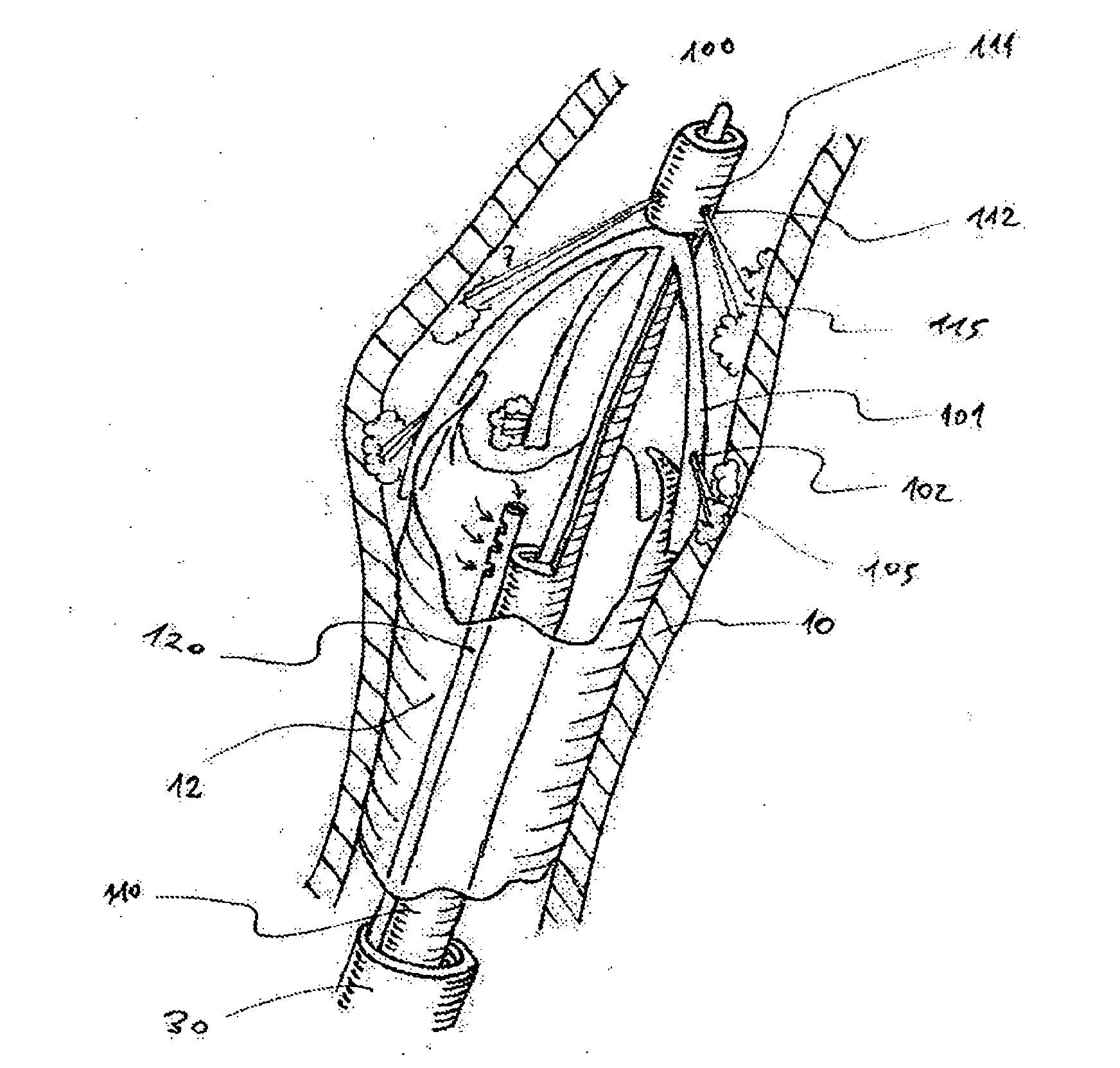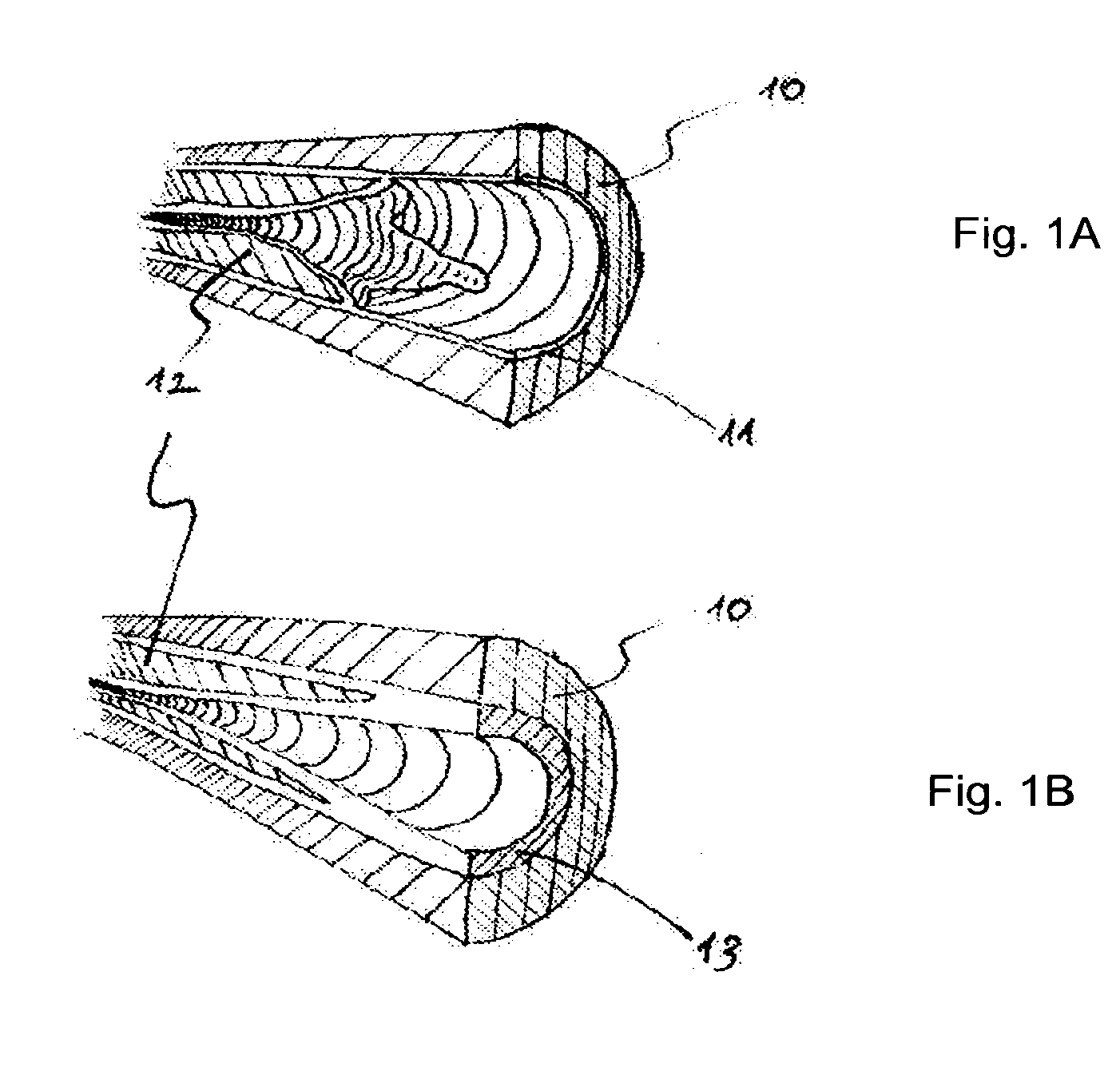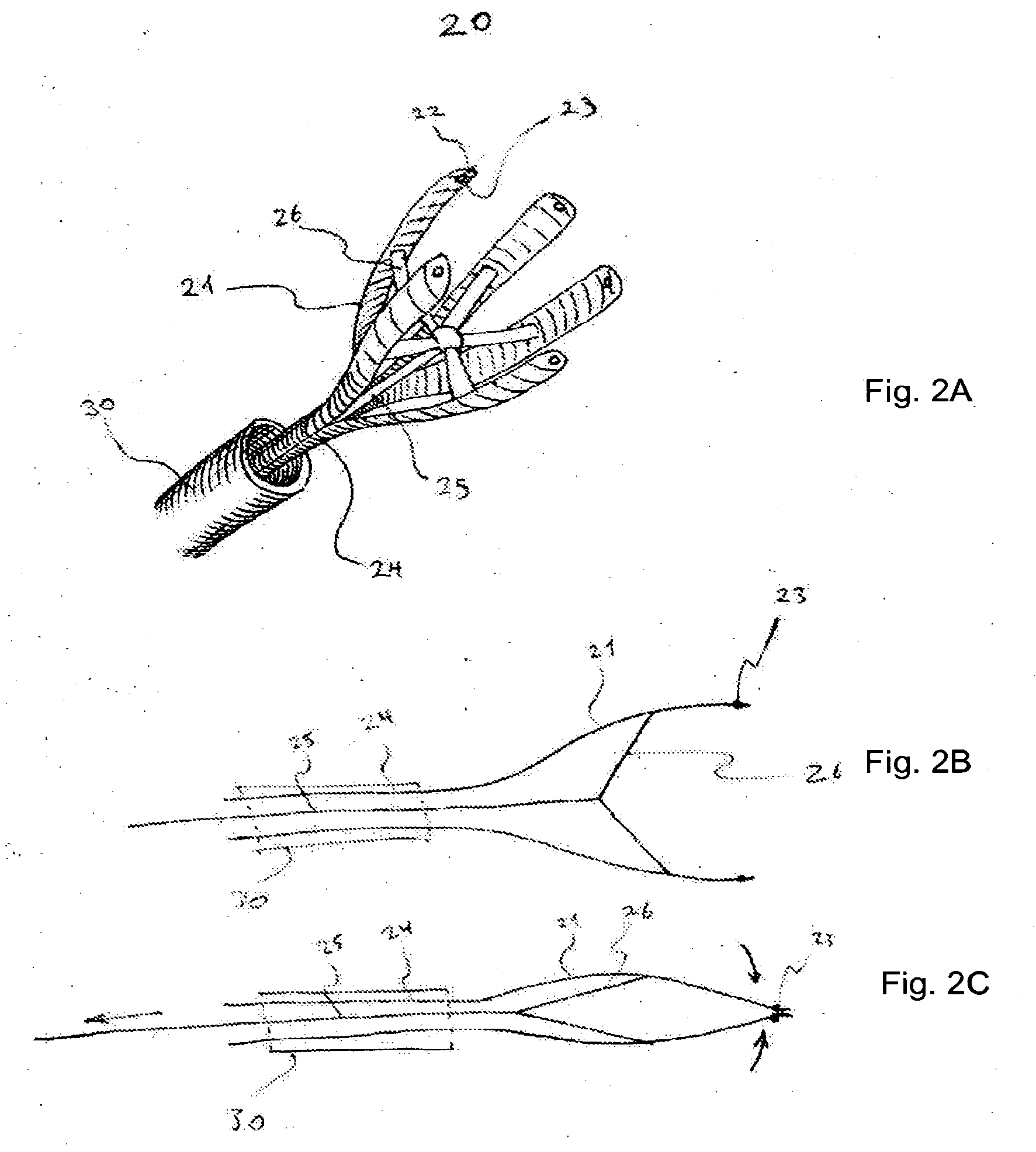Devices and methods for percutaneous endarterectomy
a technology of endarterectomy and percutaneous treatment, applied in the field of devices and methods for percutaneously treating atherosclerotic plaques, can solve the problems of vascular remodeling, acute and chronic luminal obstruction, abnormal blood flow,
- Summary
- Abstract
- Description
- Claims
- Application Information
AI Technical Summary
Benefits of technology
Problems solved by technology
Method used
Image
Examples
Embodiment Construction
[0081]The invention includes various solutions to the removal of atherosclerotic plaque from arteries. This invention includes methods and devices for performing percutaneous endarterectomy (i.e. removal of atherosclerotic plaques from arteries via a e.g. a catheter). The devices and methods may release plaque at its edge and peel away the plaque naturally, preferably, for example, along the subintimal space. All may be preferably based on the same principle of utilizing the natural dissection plane, which in the subintimal space, exists between the plaque and the media of the artery, for removing the plaque with a percutaneous tool.
[0082]As known to those skilled in the art, the subintimal space is a potential space where a false lumen could form if blood flow were to enter it through an intimal tear and cause an arterial dissection.
[0083]It is the same space used for passing the guidewire and creating an artificial extraluminal route in subintimal angioplasty procedures (the Bolia...
PUM
 Login to View More
Login to View More Abstract
Description
Claims
Application Information
 Login to View More
Login to View More - R&D
- Intellectual Property
- Life Sciences
- Materials
- Tech Scout
- Unparalleled Data Quality
- Higher Quality Content
- 60% Fewer Hallucinations
Browse by: Latest US Patents, China's latest patents, Technical Efficacy Thesaurus, Application Domain, Technology Topic, Popular Technical Reports.
© 2025 PatSnap. All rights reserved.Legal|Privacy policy|Modern Slavery Act Transparency Statement|Sitemap|About US| Contact US: help@patsnap.com



